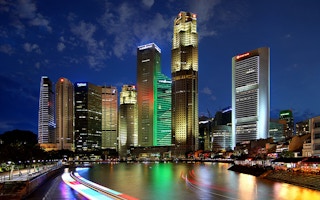There’s a lot of discussion and excitement these days about the concept of “smart cities.” While the prospect of having more technology infused in a city’s operations could be very exciting, the most important aspect will continue to be transportation.
More specifically, I am referring to public transportation. When was the last time that it took you 20 minutes to travel 2 miles (3 kilometres)? If you live in a city, it was probably not all that long ago. This is the effect of urbanisation. And with growing urbanisation, there is a growing need for convenient and reliable public transportation.
A smart city is one that uses the Internet of Things to sense and collect data. But when a city talks about getting “smarter,” it’s not enough to just have a lot of data (though that is still very important). For a city to be truly smart, it needs to be able to do something with the data, to connect people to economic opportunity, entertainment and education. And to each other.
Urbanisation has been increasing over the past few centuries and today, more than half of the world’s population lives in cities. It is estimated that by 2050, roughly two-thirds of the world’s population will reside in cities.
That translates to approximately 2.5 billion people, all who will need transportation.
With individualised car transportation already causing too much congestion and pollution, the solution cannot be more cars. The way we see it, cars cannot be the future backbone of urban traffic. It has to be public transit — more importantly, it has to be rail.
“
For a city to be truly smart, it needs to be able to do something with the data, to connect people to economic opportunity, entertainment and education. And to each other.
Rail remains one of the most eco-friendly transportation modes that we have. Some light rail is even “zero-emission” in cities that have committed to using an electrified rail infrastructure, and we’re seeing the potential for more environmental benefits as we start moving toward alternative power for trains like batteries or fuel cells.
In areas that do not have access to rail, which is often in that “last mile” of a person’s suburban commute, autonomous taxis and shuttles could cover the last mile between homes and public transportation or long-distance transport hubs, eventually making private cars surplus in cities.
Importantly, they can be supported and adjusted by roadside technology that records and monitors traffic, as well as the condition of possible unexpected events on the roads.
Many cities are already designed around some type of proven central rail network. Take New York’s Grand Central Terminal, where you can transfer to and from buses, subways, taxis and private vehicles to interstate commuter rail like the Long Island Rail Road and Metro-North. New York’s Penn Station also provides commuters similar multimodal to New Jersey Transit, and is a key stop on Amtrak’s renowned Northeast Corridor, the most heavily traveled rail route in the country joining major metropolitan areas between Boston and Washington, D.C.
We believe a robust, rail-centric network should remain the backbone or center point into which other transportation modes, like autonomous shuttles, ride-sharing, bikes and scooters, can feed into and around — providing a true seamless end-to-end journey for today’s commuter.
With the reliability and availability of the entire transportation ecosystem now further enhanced by artificial intelligence–based services, public transit capacity is increasing by automated train operation and its convenience is being enhanced by user apps that provide accurate updates for vehicle availability, connections and routing.
We want to be smarter — but it’s not enough to just keep throwing software at our existing transportation network. We need to take a step back, reinvest and build out a future transportation network — which we believe should be rail-based — while taking advantage of the new digital technologies that will ensure that these networks are sustainable over the long term.
Now that would be the smart thing to do.
Marc Buncher is the president and chief executive officer of Siemens Mobility. This article was originally published on Ensia.









